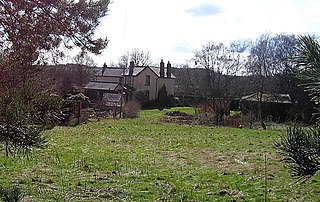Related Research Articles

The Durham Coast Line is an approximately 39.5-mile (63.6 km) railway line running between Newcastle and Middlesbrough in North East England. Heavy rail passenger services, predominantly operated Northern Trains, and some freight services operate over the whole length of the line; it provides an important diversionary route at times when the East Coast Main Line is closed. Light rail services of the Tyne and Wear Metro's Green Line also operate over the same tracks between a junction just south of Sunderland station and Pelaw Junction.

The Leamside Line, originally part of the Durham Junction Railway, is a disused railway line, located in the North East of England. The alignment diverges from the East Coast Main Line at Tursdale Junction, travelling a distance of 21 miles north through the Durham Coalfield and Washington, prior to joining the Durham Coast Line at Pelaw Junction. The Leamside Line closed to passenger traffic in 1964, under the Beeching cuts.

Bishop Auckland is a railway station that serves the market town of Bishop Auckland in County Durham, North East England, 11 miles 77 chains (19.3 km) north-west of Darlington. The station is the Western terminus of the Tees Valley Line, which links it to Saltburn via Darlington. It is owned by Network Rail and managed by Northern Trains.
The Durham–Sunderland line was a railway line in the North East of England. The line no longer exists, but many features along its path are still visible.
The Deerness Valley Railway was an eight-mile-long single-track branch railway line that ran along the valley of the River Deerness in County Durham, England. Built by the North Eastern Railway, it ran from Deerness Valley Junction, on the Durham to Bishop Auckland line, to the coal mines along the valley via two intermediate stations, Waterhouses, and Ushaw Moor.

The Durham to Bishop Auckland Line was a railway line originally built by the North Eastern Railway (NER) to provide rail transport access to coal mines in West County Durham. It closed under the Beeching Axe to passenger traffic in May 1964, and freight in 1968. Today it forms the major part of the 9 miles (14 km) Brandon to Bishop Auckland rail trail.

Penshaw railway station served the village of Penshaw, Tyne and Wear, England from 1840 to 1964 on the Leamside line.

Hepscott railway station served the village of Hepscott, Northumberland, England, from 1858 to 1964 on the Blyth and Tyne Railway.

Leamside railway station served the villages of Leamside and West Rainton, in County Durham, England from 1844 to 1953 on the Leamside line.

Belmont Junction railway station was a railway station that served the civil parish of Belmont in County Durham, North East England, from 1844 to 1857. It was located at the junction between the main line and Gilesgate branch of the Newcastle and Darlington Junction Railway.

Sherburn House railway station served the hamlet of Sherburn House and the village of Sherburn, County Durham in England from 1837 to 1931 on the Durham to Sunderland Line.

Sherburn Colliery railway station served the village of Sherburn, County Durham, England from 1844 to 1959 on the Leamside line.
Knitsley railway station served the hamlet of Knitsley, County Durham, England from 1862 to 1939 on the Lanchester Valley Railway.

Lanchester railway station served the village of Lanchester, County Durham, England from 1862 to 1965 on the Lanchester Valley Line.

Brancepeth railway station served the village of Brancepeth, County Durham, North East England from 1857 to 1964 on the Durham to Bishop Auckland Line.

Hunwick railway station served the village of Hunwick, County Durham, England from 1857 to 1964 on the Durham to Bishop Auckland Line.

Durham (Gilesgate) railway station served the Gilesgate area of Durham City in County Durham, North East England from 1844 to 1857 as the terminus of the Newcastle & Darlington Junction Railway Durham Branch passenger service. Its life as a passenger station was short and it was quickly converted to goods station, a role which it played for more than a century.

Brandon Colliery railway station served the village of Brandon, County Durham, England from 1861 to 1964 on the Durham to Bishop Auckland Line.
Leadgate railway station served the village of Leadgate, County Durham, England, from 1896 to 1964 on the Stanhope and Tyne Railway.

Broomielaw railway station co-served the hamlet of Broomielaw, County Durham, England, from 1856 to 1965 on the Darlington and Barnard Castle Railway.
References
- ↑ Quick, M E (2002). Railway passenger stations in England, Scotland and Wales - a chronology. Richmond: Railway and Canal Historical Society. p. 458. OCLC 931112387.
- ↑ "Disused Stations: Willington". Disused Stations. Retrieved 28 April 2017.